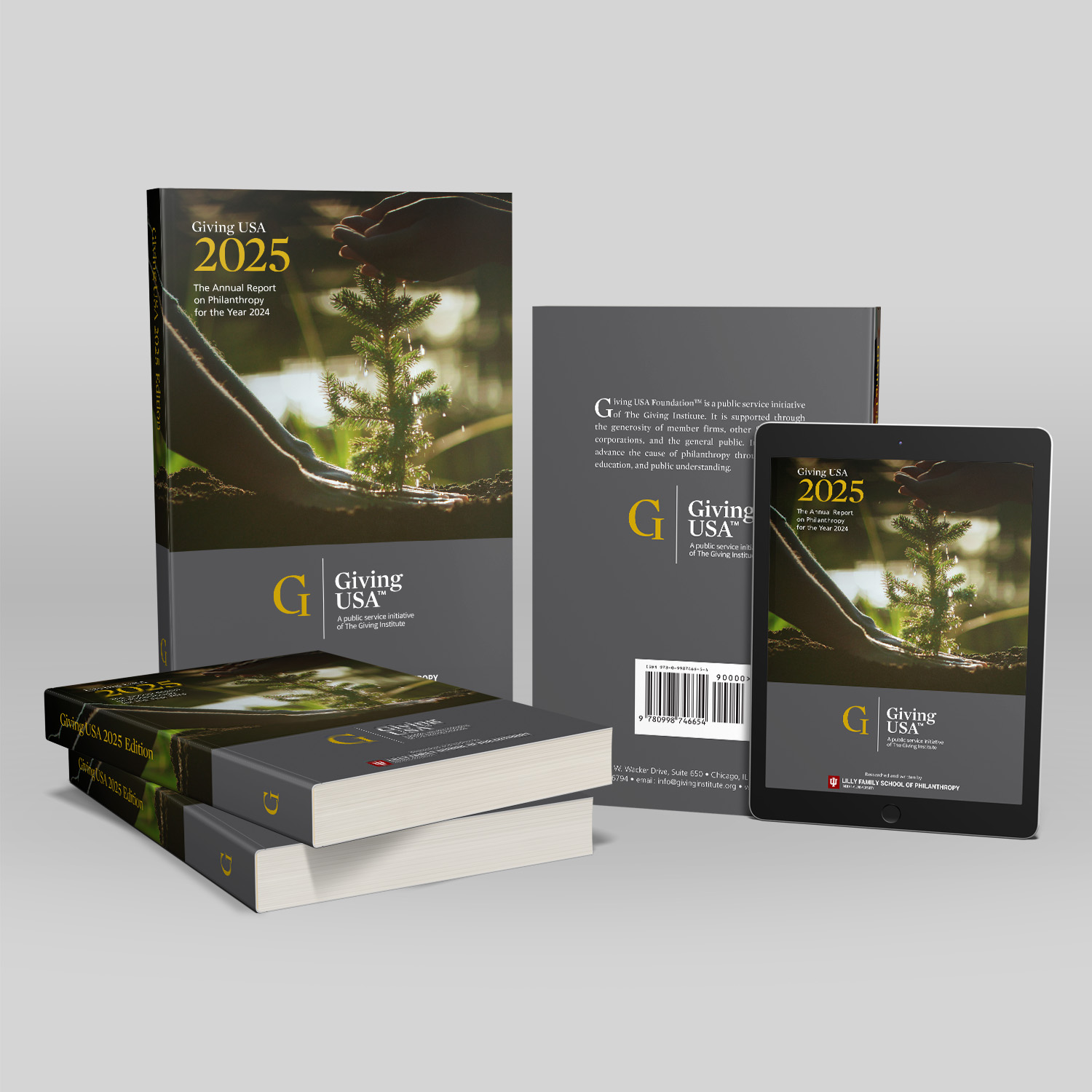 Written by President and CEO Elizabeth Zeigler, Executive Vice President Pat House, and Senior Counsel Gina Vaughn at Graham-Pelton
Written by President and CEO Elizabeth Zeigler, Executive Vice President Pat House, and Senior Counsel Gina Vaughn at Graham-Pelton
There is a real theme of tenacity in American culture. Picture the Energizer Bunny, the one that keeps going and going. Or The Little Engine That Could, which, well, did – and this year celebrates its 100th birthday. And schoolchildren since at least 1840 are familiar with what they should do if they don’t at first succeed (a refresher for us adults: “try, try again”).
American philanthropy can be viewed through much the same lens. Graham-Pelton has long espoused that even those moments that feel like seismic shifts– The Great Recession, or the COVID-19 pandemic – do not register at quite the same intensity when it comes to Americans’ penchant for generosity. The data show that even during great uncertainty, our generosity keeps going and going.
That’s why we want to recalibrate another seemingly tumultuous shift: the upcoming federal election. As it approaches, we’ve read the articles, heard the voiced concerns, and fielded questions from those who may be tempted to slow down their fundraising asks. Their fears range from post-election market instability to the potential for tax policy changes. It is our duty to set the record straight: you have reasons for optimism regarding your fundraising.
Optimism, in this case, doesn’t mean simply hoping for the best. It means turning that hope into action or having realistic optimism. This means that one must make fundraising success happen through, as this Harvard Business Review article states, “things like effort, careful planning, persistence”, “choosing the right strategies,” and “giving serious thought to how [to] deal with obstacles.”
So, in the spirit of realistic optimism, here are the five reasons why you should feel bolstered to ask for money in the coming weeks, along with tactics to build confidence and clarity as you make your requests.
1. It is presumptuous to think that your supporters feel that the outcome of the election will have great effect on what they can accomplish philanthropically.
Though the election concerns some people greatly, it is not likely that the vast majority of donors are going to be so disquieted that they change their giving habits wholesale. This is not to discount the important role that elections play. Rather, we suggest that a single election is not likely to be the direct trigger to a change in giving habits. In fact, it may even spur greater “cause” giving by fellow citizens.
2. “Election Day” is a misnomer, especially this year.
There are pre-election, during-election, and post-election periods that cumulatively cover many months. What’s more, the United States has one of the most frequent election cycles among large democratic nations when you consider Congressional, State, and local elections. Delaying your efforts for months is simply not logical or practical.
3. Even if donor concerns (or hopes) are realized, change will not take place overnight.
Even if party changes take place at both the Presidential and Congressional levels, sweeping overhauls take a long time to enact. Note that, historically, a President is never more powerful than the first year of a term, so if legislative changes are going to be made, the progress will at least begin very quickly. Yet with few exceptions, the less than 10% of bills that eventually become law take, on average, more than eight months to do so. What could be considered “lightning fast” in the legislative process remains, by other measures, a relatively slow process. And not one that should stall asking for support – especially as cause giving continues to be on the rise.
4. One deadline is certain: The CARES Act adjusted gross income tax deduction ends on December 31, 2020.
The CARES Act allows donors to take a tax deduction of up to 100% of their adjusted gross income (AGI) for contributions to qualifying charities, lifting the limits on charitable giving up from 60%. However, this concludes at the end of 2020. If you delay asking, your supporters miss out.
5. History shows that you can “roar out of a recession” as long as you have the right focus and planning.
A 2010 article from the Harvard Business Review continues to ring true: companies that flourished in the three years following a recession did so because of preparation. As the article states, “Among the companies that stagnated in the aftermath of the Great Recession, few made contingency plans or thought through alternative scenarios,” and “Many of the companies that merely limp through a recession are slower to recover and never really catch up.”
The same can be said for nonprofits. By using this time to focus, plan, prioritize, and streamline your efforts and outreach, you will be ready to roar into action – even if it’s in the middle of your fiscal year or a less traditional time to launch an effort. The cost of not being ready to “roar” is simply too high.
It is truly remarkable and quite humbling that donor generosity and a quintessentially American “can-do” spirit transcends current events time and time again. Yet, we acknowledge that making asks during weeks in which attention is divided and emotions heightened requires a level of finesse and fortitude.
So, as you approach your donors in the coming weeks, consider the following:
1. While your mission remains a bedrock, consider the ways it may be cast in a meaningful light depending on the outcome of the election.
Your mission underpins your efforts, but those efforts could be messaged differently given current events. Analyze the ways that your mission has a micro effect on a macro issue. For example, an independent school may not write legislation that will result in a major overhaul of the tax code, but it could very well set a young person on the path to a career as a public servant.
Take time to think through and speak with your colleagues about your organization’s potential for such outcomes. As a result, you will grow in your confidence to talk about the role your organization plays in the current environment.
Organizations that reframe their messaging to continue to be relevant and forward-thinking are those that can also articulate their needs to donors with aplomb.
2. There is no denying that a difficult year has had a cumulative effect on our collective psyche. Use empathy in your approach with donors.
Despite our realistic optimism (or because of it), we know that this year has not been a normal one, and that its cumulative effects have taken their toll. We don’t blame fundraisers, board members, and volunteers for not thinking from all angles about asking for money. Yet, we can deploy empathy in combination with facts, mission articulation, and hope for a stronger tomorrow.
3. Confidence grows when you really know your supporters.
Fundraising is all about relationships, and that has not changed – nor will it. One way to increase your confidence when it comes to making an ask is to have greater awareness of the relationships in which you’re currently engaged and to use prospect research with those you’re still evaluating.
Consider the power of the word know: “to be absolutely certain or sure about something, usually through observation, inquiry, or information.” Contrast that with the word think: “to have an opinion, belief, or idea.”
Let’s say you know that your prospective donor is heavily involved with the Senate race in your state. In fact, you’ve seen them delivering yard signs across the greater region! It takes only common sense to know that they don’t have the bandwidth to absorb much beyond their involvement in the election.
Conversely, you think a potential supporter might give more following the election. Why? What evidence do you have that supports this? The best evidence – what transforms the think into the know – is when you have a conversation with that person about the timing of a potential commitment.
When it comes to your supporters, don’t just operate in the now. Operate in the know.
Pluralism is not just a national ideal; it is a philanthropic one. In fact, pluralism might be one of the essentials of philanthropy: where those of us, despite a plethora of differences, preferences, and identities, can still come together to participate fully under a common cause. It’s a reminder that humanity contains more similarities than differences. And it’s a reminder that humanity depends on philanthropy.
In the coming weeks, be prepared to share all that your organization could accomplish with philanthropic support. But most of all, be prepared to listen. And by listening to and understanding your supporters, by focusing on strategies grounded in realistic optimism, and by relating missions to the ripple effect they could have on the wider world – you can elevate philanthropy far beyond Election Day.


